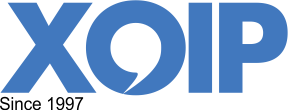There are a few differences between porting and forwarding numbers to XOIP. You can view a short overview of this in the blog below.
XOIP can, for example, take over your current fax number. This takes around 5-7 business days. To do this, you will need to sign up for a one-year, or longer, XOIP subscription. If a number needs to be ported from an ISDN2-subscription, XOIP needs to take over all numbers from this registration. If this is the case, you will need to inform XOIP about it.
All XOIP services are available to ported numbers. After porting, your number will not be available on your fax machine or phone and all faxes and voice mail messages will be forwarded to your email. This saves you costs from your existing telecom provider, when you for example forward your phone.
You can use XOIP as a voice mail and fax service when your numbers are forwarded to XOIP. This feature is available to both personal and business numbers. When you call someone, your telecom provider will forward this call to your XOIP number. Your telecom provider charges money for this. These are the same costs that you would pay if you call your XOIP number from your phone. The person calling you will pay the regular costs of a call to your phone. You pay for the call costs from your phone to your XOIP number.
You can also XOIP to replace the voice mail-service of your mobile operator. An interesting benefit is, for example, the ability to use email to listen to messages left on your mobile phone while you are overseas. You will not have to pay the high roaming costs.
In forwarding your number to, among others, Skype, XOIP first tries to connect the call. If a connection cannot be made, the call is automatically forwarded to voice mail. If you do not forward your calls, XOIP voicemail will automatically take the call.
